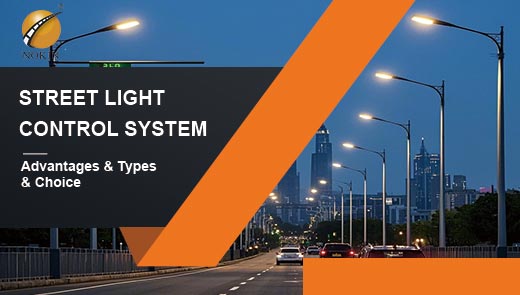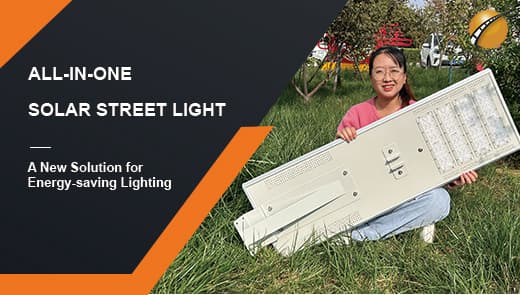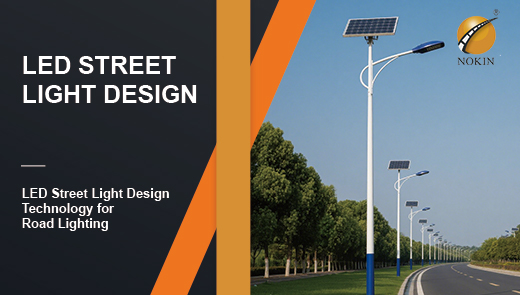Solar Street Light Pole Height and Spacing Design Guide
Solar energy is a kind of clean and renewable energy. With the continuous development of solar energy technology, the production and life of solar energy technology are also changing people's lives. In the field of lighting, the development of solar street lights is also more and more rapid. As a kind of green, environmentally friendly, and efficient lighting equipment, it has been widely used in modern cities and villages for road lighting. To make solar street lights play the best lighting effect, reasonable design of the height and spacing of street light poles is crucial. This not only relates to the uniformity and brightness of the lighting but also affects the efficiency of energy utilization and the overall cost-effectiveness. Next, we will discuss in depth the design points of solar street light pole height and spacing.

Solar Street Light Pole Height
Factors Affecting the Height
Difference in lighting area demand: sidewalks are mainly for pedestrians to pass through, and the lighting demand is relatively low; the main road has vehicles traveling at a fast speed, which requires a brighter and broader lighting range to ensure driving safety.
Lamp power and light-emitting angle: large power, light-emitting angle of the lamps, suitable for installation in the higher street lamp poles, conducive to the light projected to a greater distance; small power, light-emitting angle of the lamps and lanterns, can be installed in the relatively low street lamp poles.
Surrounding obstructions: If there are tall buildings, trees, and other obstructions around the street light, it is necessary to increase the height of the street light pole appropriately to ensure that the light effectively covers the target area.
Recommended Heights for Different Scenarios
Residential streets
Considering the daily life and safety of the residents, the height of solar street light poles installed in residential areas is generally 3-5 meters. This height can provide sufficient lighting without generating glare that interferes with residents' rest.
Commercial area
Due to the high traffic volume in the commercial area, there are many stores. To create a bright and lively atmosphere, the height of the solar street light pole installed in the commercial area can be set at 6-8 meters so that the light can fully illuminate the streets and store fronts.
Industrial park roads
In the industrial park there are often large vehicles and high requirements for vision. Street light pole height is recommended at 8-12 meters to meet the lighting needs of vehicles and cargo handling operations and to protect the park's nighttime operational safety.
Rural roads
Traffic flow is relatively small, the road environment is open, and the height of the street light pole is generally 4-6 meters, not only to protect the villagers' nighttime travel safety but also in line with the principle of economic and practical.
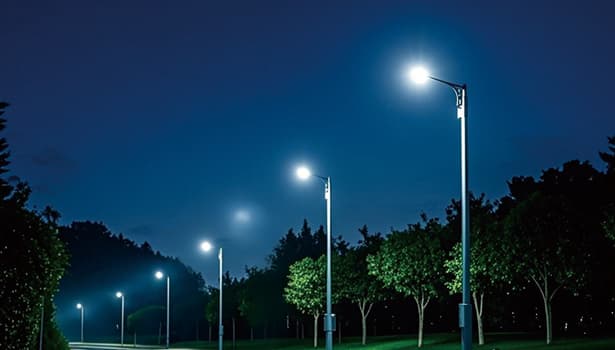
Solar Street Light Pole Spacing design
Elements Determine the Spacing
Street light pole height correlation
Usually the higher the street light pole, the wider the light coverage of the solar street light; the street light pole spacing can be appropriately increased.
Lamp brightness and lighting range
High brightness, wide range of lighting solar street lamps, street lamp pole spacing can be set larger; low brightness, narrow lighting range of lamps, you need to reduce the spacing in order to ensure the uniformity of lighting.
Road width and traffic flow
Wider road surface, high traffic flow road—in order to ensure the safety of vehicles and pedestrians, the need for more intensive lighting, street light pole spacing should be relatively small; road surface is narrower, the traffic flow of small roads, street light pole spacing can be appropriately increased.
Appropriate Spacing for Various Types of Scenes
Urban expressway
Vehicles traveling at a fast speed, the lighting continuity and uniformity requirements are extremely high. In order to ensure that drivers have enough vision, the spacing between the poles of solar street lights installed on urban expressways is generally about 25-35 meters.
General urban roads
Street light poles are usually spaced 30-40 meters apart, which can meet the daily lighting needs and at the same time achieve a good balance between cost and lighting effect.
Internal roads in small districts
Mainly to serve the residents travel, street light pole spacing can be set at 15-25 meters for the residents of small districts to create a warm, safe living environment.
Park trails
For visitors to walk for leisure, the light softness requirements are higher; street light pole spacing is generally 10-20 meters so that visitors do not feel uncomfortable due to glare when enjoying the night scenery.

Solar Street Light Pole Installation Height and Spacing Recommendations for Different Situations
Mutual Influence Principle
The height and spacing of solar street light poles do not exist independently but are closely related and interact with each other. The height of the street light pole directly determines the installation position of the lamps and lanterns, which in turn affects the light projection range. Higher street light poles can make the lamps and lanterns spread the light to a longer distance. If the spacing is too small, the light will excessively overlap, resulting in energy waste and visual glare, while if the spacing is too large, it will form a solar street light lighting dead zone, affecting the uniformity of lighting. Similarly, the street light pole spacing settings need to be adjusted according to the height. When the spacing is large, it is required that the street light poles have sufficient height so that the light emitted by the solar street light can effectively cover a wide range to avoid the emergence of lighting blind spots.
Bad Match Case Analysis
Height is too high and spacing is too large
In some newly developed industrial parks, some roads are designed to show the open atmosphere, and street light poles as high as 15 meters are selected, and the spacing is set at 60 meters. As the power of the lamps has not been significantly increased accordingly, it has resulted in a large area of insufficient illumination between the street lamps. When truck drivers drive at night, it is difficult to see the edge of the road and the surrounding environment; there is a great safety hazard, seriously affecting the lighting effect and the normal use of the road.
Height is too low and the spacing is too small
A small community in the street lamp renovation, in order to save costs, chose 3-meter-high low street lamp poles, and the spacing is only 10 meters. As a result, when the street light is turned on, the light is too concentrated in the near area, not only limiting the lighting range but also producing serious glare. Residents' eyes were easily irritated when they were walking, which was a nuisance in their daily lives and did not achieve the expected energy and cost-saving objectives.
Collaborative Design Method
Calculation based on lighting demand
Based on the lighting demand of different areas, such as the illumination requirements of main roads, secondary roads, sidewalks, etc. in national standards, combined with the luminous flux and luminous efficiency of the solar street lamps and other parameters, the reasonable range of the height and spacing of the street lamp poles is preliminarily determined through professional lighting calculation formulas. For example, for a 20 lx illumination requirement of the city's secondary roads, the choice of luminous flux of 10,000 lm lamps and lanterns, the calculations may be derived from the street lamp pole height of about 8 meters, and the spacing of 35 meters is more appropriate.
Optimization with the help of simulation software
The use of professional lighting design software, the initial calculation of the height and spacing data into the model to simulate the street lamps at different times, under different weather conditions, and the lighting effect. Through the software generated by the illuminance map, glare distribution map, etc., they intuitively found uneven lighting, glare, and other issues and targeted adjustments to the height and spacing of street light poles until the ideal lighting effect was achieved.
Consider the environmental factors. Fine-tuning
The actual installation environment is complex and diverse; we need to consider the surrounding buildings, trees, terrain, and other factors. If there are high-rise buildings on one side of the road blocking, need to appropriately increase the height of the street light pole and reduce the spacing to ensure that the light can bypass the blocking object, uniformly illuminating the road; in the mountainous areas of the road with large terrain, according to the terrain changes in the flexibility of adjusting the height of the street light pole, and at the same time reasonably set the spacing to ensure that the various sections of the road are well illuminated.
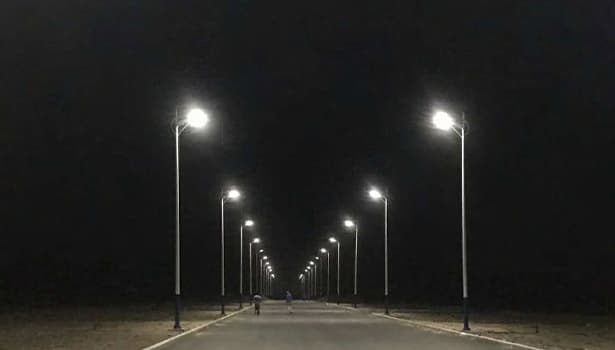
Different Location Street Light Spacing and Height
Urban Roads
Main roads have high traffic flow and fast speed, which need to ensure the brightness and uniformity of lighting. Street light pole height is generally 10-12 meters, with spacing of 30-40 meters, with high-power, wide-beam-angle lamps and lanterns to achieve comprehensive coverage. The height of secondary road light poles can be 8-10 meters, with a spacing of 25-35 meters, to meet the basic lighting needs.
Residential area
Focus on creating a comfortable and quiet living environment. Street light pole height of 3-5 meters, spacing of 15-20 meters, and the use of low-glare, warm-colored lamps and lanterns to avoid affecting the residents' rest while ensuring the safety of residents traveling at night.
Parks and scenic spots
In order to create a pleasant night atmosphere, the height of street light poles can be flexibly adjusted according to the landscape design, generally at 4-6 meters. Spacing 10-15 meters with beautiful shapes and soft light lamps not only can illuminate the trail but also, with the integration of the surrounding landscape, enhance the overall sense of aesthetics.
Solar Street Lights Pole Height And Distance Design Process and Notes
Design Process Steps
Site Survey: Carefully measure the width, length, slope, and other parameters of the road, and observe the surrounding environment, including buildings, trees, terrain, and other conditions. At the same time, understand the lighting needs of the area, such as whether it is a major traffic artery or there are no special activities in the area.
Preliminary calculation: Based on the site survey data, combined with the parameters of the solar street light (such as power, light-emitting angle, brightness, etc.), use the relevant lighting calculation formula to calculate the height and spacing of the street light poles preliminarily.
Simulation Verification and Adjustment: Use professional lighting design software to carry out simulation verification, visualize the lighting effect, discover potential problems, and make corresponding adjustments until the ideal lighting effect is achieved.
Cautions
Follow the lighting standards: When designing the height and spacing of solar street light poles, make sure to strictly follow the relevant national and local lighting standards, which are an important basis to ensure the quality and safety of lighting.
Consider the cost-effectiveness: increasing the height of street light poles and reducing the spacing can improve the lighting effect, but it will increase the cost of materials, installation, and maintenance. Therefore, it is necessary to reasonably control the cost under the premise of ensuring the lighting effect.
Reserve space for expansion: With the development of the city and the increase in traffic flow, lighting needs may change. The design should reserve a certain adjustment space so that it is convenient to add or adjust the street light in the future.
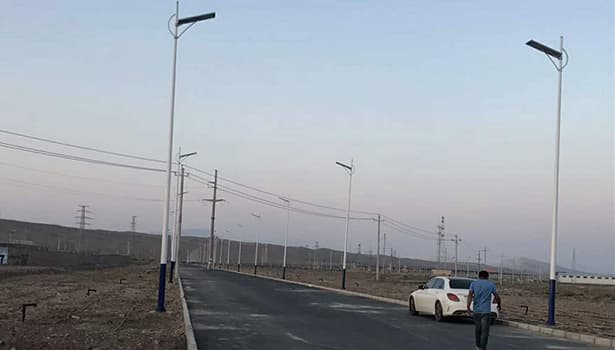
Conclusion
The design of pole height and spacing of solar street lights is a comprehensive work, which needs to fully consider lighting demand, lamp parameters, the surrounding environment, and other factors. In different scenarios, the appropriate height and spacing should be selected according to the actual situation, and focus on the synergistic design of the two. At the same time, follow the scientific design process and pay attention to related matters in order to create both an energy-efficient and economical solar street light lighting system for people's travel and life to provide good lighting protection.

